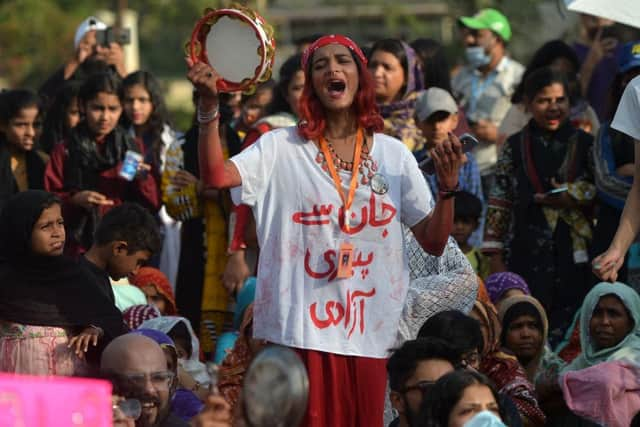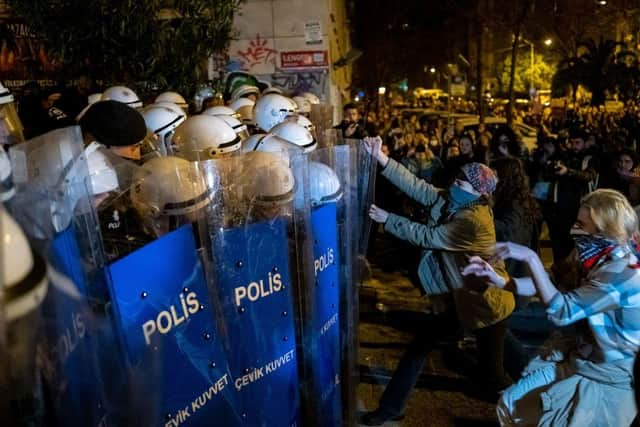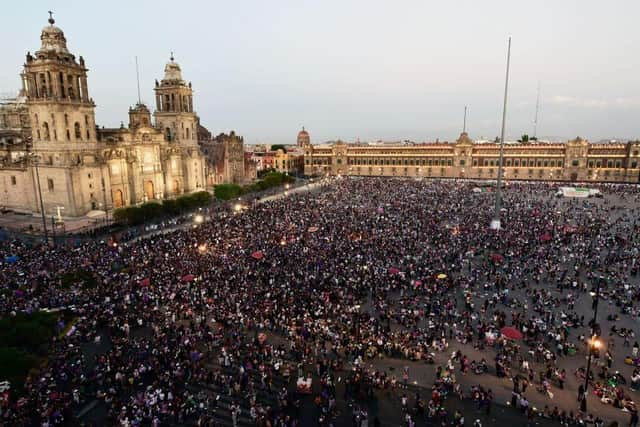International Women’s Day: How is it marked around the world? From Russia to US, Germany, China and Saudi Arabia
On International Women’s Day (IWD) four years ago, some women in Russia had had enough.
The Russian newspaper Kommersant ran a story with the headline: “Thank you for the flowers, but I demand respect.”
Advertisement
Hide AdAdvertisement
Hide AdOver the years, the holiday has evolved into a celebration of women and mothers by their men folk in countries where it is traditionally celebrated. Female workers receive gifts and flowers from their employers, partners and children, public events are held and in some countries, women are even given the day off.


However, many women became tired of being “celebrated” on March 8, while struggling to have their voices heard during the rest of the year, sparking protests across the globe.
Dr Louise Livesey, senior lecturer in criminology at the University of Gloucester, with a focus on violence against women, points to a correlation between countries which historically celebrate International Women’s Day and lower levels of gender equality, such as Poland, which made abortion illegal in 2021, and Russia, where women’s rights have been eroded since the end of Soviet times.
"Whilst the gift-giving might sound nice, particularly in a country like the UK with no particularly strong IWD traditions, we should note that many of the countries who have traditions of gift giving are also countries with poor gender equality histories,” she wrote in an analysis of the celebration.
“So, the one day a year of gift buying marks less an embedding of gender emancipatory practices and more a gesture of reinforcement of dominant patriarchal hegemony focusing on celebrating women’s domesticity through the gifts marketed at celebrating household domesticity, beauty and reproductive capacity.”


International Women’s Day began in its earliest incarnation in 1909, when New York City’s female garment workers went on strike, calling for better pay, shorter hours, improved working conditions and voting rights. Calling it “Women’s Day”, it was celebrated initially on February 28, with the March 8 date eventually being chosen through links to the women’s movements during the Russian Revolution of 1917.
Expanding beyond the US, the idea of an international day was first adopted by European countries after German socialist Clara Zetkin proposed the idea of a permanent day in the calendar year during which women could make their voices heard. Celebrated and formalised by the United Nations in 1975, each year the UN now adopts a theme as a way to highlight a specific issue and focus attention.
In some countries, such as Nepal, women are given the day off work to celebrate. Berlin also took on the idea in 2019, when it became the only German state to declare the day a public holiday – for both men and women. In China, which has recognised International Women’s Day since 1949 and has a “Girls’ Day” the day before, companies are encouraged to give female workers a half day’s holiday.


Advertisement
Hide AdAdvertisement
Hide AdIn other countries, specific flowers are given to women by the men in their lives. In Poland, the day is usually marked by the giving of a tulip, whereas in Italy, women receive the mimosa flower.
Meanwhile, although International Women’s Day is not a public holiday in Italy, women have enjoyed free access to museums across the country, as well as free medical check-ups from over 200 hospitals.
In Armenia, where the streets in major cities are decorated with balloons to mark the occasion, International Women’s Day marks the start of an unofficial ‘Women’s Month’, culminating in a “Motherhood and Beauty Day” a month later, on April 7.
Saudi Arabia, which has a significantly repressive gender regime, holds a three-day conference every year for International Women’s Day, where Saudi royalty and male citizens come together to “celebrate the Saudi woman and her successful role”.
In recent years, the global mood has changed. Women’s groups around the world have started to use International Women’s Day to hold protests against inequality, violence against women, and to promote women’s rights and abortion laws.
In Pakistan, women hold an annual “Aurat March” or women's march in Karachi, where they call for greater accountability for violence against women.
Meanwhile in Spain, more than five million female workers marked International Women's Day in 2018 with a 24-hour strike to protest against the gender pay gap, domestic violence and sexual discrimination in the workplace. Rallies took place around the country in more than 200 locations. Those taking part were encouraged by organisers not to spend any money on the day and not participate in any domestic chores.
This year is no different. Protests are planned across the globe, from Cambodia, where civil society groups will gather to call for the release of female activists allegedly imprisoned for their anti-government stance; to Syria, where women in Raqqa – which was once controlled by Islamic State – took to the streets on Sunday to launch a week of events to mark International Women’s Day
Advertisement
Hide AdAdvertisement
Hide AdCanadian-headquartered international security organisation Crisis24 has warned protests in some countries may attract crackdowns by local law enforcement.
"Some unrest is possible in countries where large divides exist between liberals and conservatives,” the organisation said this week. “Notably, Women's Day gatherings in Pakistan have courted controversy for their purported anti-Islamic stance in promoting acceptance of gender and sexual minorities, criticism of socio-religious norms governing women, as well as support for anti-governmental activists and other ethnic and religious minorities such as Balochis and Hazaras.
"Violent crackdowns are also likely in Afghanistan, where small protests involving dozens of activists may gather in major cities like Kabul. Authorities have dispersed previous rallies through mass arrests, usage of stun guns, and water cannons.”
Dr Livesey added: "In recent years, IWD has become reinvigorated as the site of political activism by women and for women.”
Comments
Want to join the conversation? Please or to comment on this article.
